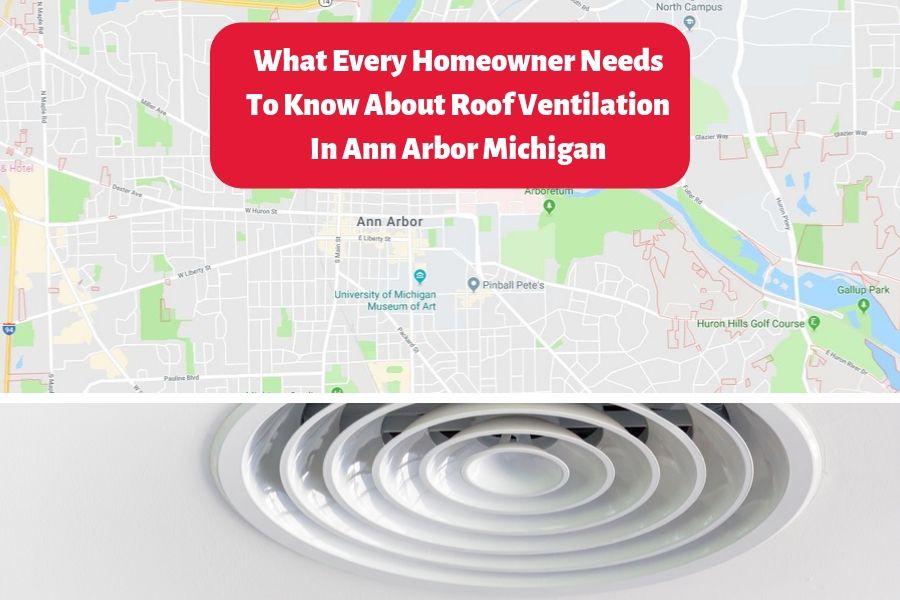The ventilation on the roof and inside the attic is a crucial part of any home. From windows to kitchen ranges, and even bathroom fans, you need to be able to remove heat and steam from your home and without proper ventilation this could mean higher humidity and moisture in your home. But many homeowners often forget to consider the ventilation in their roofs and attics. Heat rises and the roof and attic are the final destination for heat in your home. Without proper roofing ventilation in Ann Arbor Michigan, this heat sits and can cause a lot of problems for you down the road. There are also many other issues that can come from improper ventilation in your roof and attic.
What Every Homeowner Needs To Know About Roof Ventilation In Ann Arbor Michigan
There are many problems that can occur if you don’t have proper ventilation in your roof and attic. And just because you see the vents on your roof doesn’t mean it is working properly. Many times the ventilation can get clogged up because of debris or wildlife. Ensure that all vents on your home are free and clear to maximize air flow. Improper ventilation can lead to many problems including damage to your roof as well as contributing to mold growth in your home which can become unhealthy for your family. If you aren’t sure whether or not it is worth it to get the ventilation in your roof and attic checked, here are some good reasons:

Heat Stress
When the heat from your home rises into your attic, it will sit if there is no place for it to go. In the hotter months like summer, this can easily lead to heat stress. This can wreak havoc on anything you have stored in your attic and can make it extremely uncomfortable for those in the home. The heat in your attic can cause temperatures to raise as much as 50 degrees more than what it is on the outside. Even if your attic is closed, it can still heat up your ceiling and spread to make your home much hotter than it should.
Water Damage
Without air flowing in and out of your roof and attic, there is no way for the moisture inside to dry. Moisture can get in through leaking pipes, HVAC systems and cracks in your roof. This means that once the moisture is inside your attic, it stays there. When you consider the higher temperatures in the attic, you also highly increase your chances of mildew and mold growing in your attic. Mold can be highly toxic and can quickly spread throughout your home. It can lead to respiratory problems, allergies and skin irritation for all occupants.
Sitting water can also cause warping, rotting and weakness to the wooden structures inside. This can lead to leaks in your ceiling as well as structural damage to your home.
Energy Bills
The heat of your roof can impact your home’s temperature far more than you might think. As dark colored shingles and tiles absorb heat into your roof, it can sit in your attic and heat up your ceiling. While heat does rise, if it is absorbed and trapped in your attic, it will cause your home to be warmer. That means that your home can be unbearable in the hotter months and can make it necessary to run air conditioners and fans far more often. The longer and harder your air conditioner needs to work, the greater your energy bills are going to be to keep it cool. By allowing the heat a place to exit, you can drastically cut down on your monthly cooling costs.
Balance
Balance is key when it comes to attic ventilation. You need air to flow both in to keep it dry, and out to allow the heat a place to go. You need to have the proper size, covering and security for your vents to get the best results and prevent unwanted pests from getting in.
Call for a Roof Inspection Today
Be sure to call a qualified roofing contractor such as A2 Roofing today to get a roof inspection on your home’s roof and attic. A2 Roofing can also provide a free quote on any repairs needed for your home. Call today at 734-548-9915 for details.
